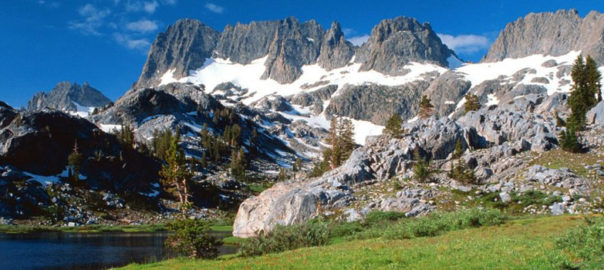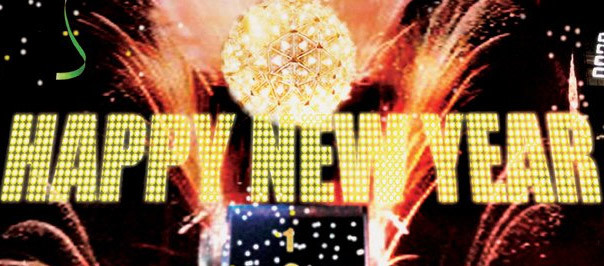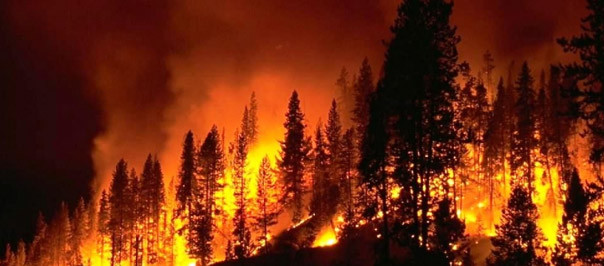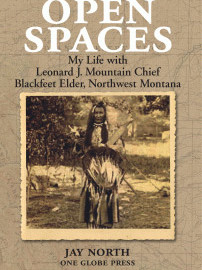By Jay North
“This land is my land, this land is your land, from California to the New York Island” sang Pete Seeger. While Woody Guthrie penned these now famous words, Mr. Seeger sang the song perhaps more than any- one else and definitely from the heart. There is an element of truth to the words. This is indeed our land and the question concerns whether we could all do more to look after it. Californians have a unique opportunity to enjoy the outdoors year ‘round, from the mountains to the sea, and we truly have it all at our collective finger tips. Whether people enjoy snowboarding, surfing, skiing, hiking, biking, boating or fishing, there is no lack of the endless recreational possibilities we may enjoy. However, along with these opportunities for recreation there also comes responsibility.
This focus is on California mountain streams and the endless beauty of the Eastern Sierra with its majestic peeks, national parks, as well as clear streams and lakes. Residents and visitors alike are blessed with so much beauty, unless it becomes trashed. Yes, trashed by men, women and children, the likes of which simply do not understand the harm that they are doing to the environment and the animals that live there in these sacred mountains. Therefore, a change needs to come. This land is my land; this land is your land, and together we should all look after it.
Interview with James Erdman, Biologist from The Dept of Fish Game and Wildlife. Stationed in Bishop, California.
On April 4, 2016.
“Don’t trash my woods,” said James Erdman.”
Jay: Good day, Mr. Erdman, and thank you for taking my call today. Mr. Erdman, what is the most important message you have for people that utilize the Eastern Sierra for recreation?
James Erdman: “KEEP IT CLEAN and don’t trash my mountains.”And then he laughed. No kidding. Really, there are not many outdoors enthusiasts today that have not heard the phrase or observed the sign that reads: “Pack it in, pack it out.” But this simple rule gets violated on a daily basis. It almost seems to me that a lot of folks just don’t care or cannot understand the damage being perpetrated on nature. Animals live in these mountains and near streams in the valleys and eating mankind’s left over is not a good thing. Leaving trash, broken glass and burger wrappers is not appropriate in the woods or next to streams.
He went on about outdoor people’s duty and obligation to be good stewards of the forest and the valleys.
Jay: What would you ask us to do when here in the Eastern Sierra’s wilderness or parks?
James Erdman: Follow the rules! Disposing of trash on the highways is illegal, as it is in the wild and carries a hefty fine. We have signs that tell us to report poachers, but we also need signs that read: Report trasher’s, too.
Jay: What about fisher people? What advice do you have for them?
James Erdman: Use barbless hooks and release more fish than you catch. Furthermore, release fish gently and don’t over fish your limit, even if you are not going to keep them. And please don’t leave your discarded line on the ground as it gets caught up in bird’s beaks and legs. It looks terrible and simply does not belong on the earth. Now, regarding the subject of releasing fish. If a fish swallows your hook, simply cut the line. The hook will eventually dissolve and the fish stands a better chance of living than having the hook yanked out or removed. When you release a fish, keep the body of fishin the water and keep your hands wet, so as not to remove their slime. Leaving fish to be caught by another angler just makes sense, and when it comes to wild trout, it just makes good sense to leave them in the water to breed.
Jay: Any comment regarding fly fishing versus bait fishing?
James Erdman. No, that is a personal choice of every angler; although my personal choice is fly fishing. Regardless, they both need to be performed consciously and responsibly.
Jay: What’s up with this New Zealand snail business?
James Erdman: Well, this snail business as you call it can be dangerous and costly. We have foreign snails finding their way into our waters, both by boaters and wading fisher people. They sometimes are tiny little things that can hardly be seen by the human eye, and they get themselves aboard and pollute our waters and drinking water pipes. The danger is the clogging of pipes and polluting drinking water. Therefore, the Department of Fish Game and Wildlife has asked all fisher people to be aware and to remain vigilant concerning this. When removing boats from lakes, they need to be washed thoroughly and then allowed to dry completely before entering new waters. The same holds true for fisher people. If they use waders, they need to be washed and allowed to dry for 72 hours before entering new streams or lakes. The California Department of Fish Game and Wildlife is working hard to rid our waters of these peskysnails.Oh, and one other way to clean waders is to freeze them for 24 hours before reusing them.
Jay: And what do you have to say about backpackers, climbers and campers?
James Erdman: (He laughs). Listen, Jay, when I say these are my mountains, I mean it. These mountains belong to all of us. This is how I work! When I take my crew up into the back country, we carry trash bags and ask crew members every day whenwe are in the high county to pick up one piece of trash every day.You would be surprised to see the amount of bottles, cans and plastic we remove each and every trip up in the woods. It’s truly a disgrace! I believe there are more educational programs in place than ever before and yet trashing the woods still occurs on a regular basis. And as far as campers go, I have to say they are the worst offenders of trasher’s in the Eastern Sierra’s. In fact, twice each year a highly popular group of citizens come together to clean up several rivers and drainages in order to remove mounds of trash from Mono Lakes, Mammoth Lakes, and all the way down to Alabama Hills. It’s only twice per year and only a two day event, but it does a lot of good to remove the things people leave behind.
Jay: Mr. Erdman, I would like to share a story with you. It was July 4t, 2015 and one of the Eastern Sierra’s busiest weekends. I was camped at Pleasant Valley on the Owens River, and as you know, it’sa wonderful trout fishery below the reservoir. It was dusk and here they came in minions. Directlyacross from where I set up, there was a group of folks, men, women and young children, all setting up camp. I knew it was going to be a sleepless night justbased on the rowdy nature of the group. After two days of this, oh my goodness, I was wondering what I was doing there on the 4th of July. On the third morning, a quite large group of boys were playing down on the Owens River. At first I thought to myself, “How nice it is to hear children’s laughter. But wait; there is more to this story. These young people were dumping their camps trash right into the river. “Oh Lord no,”I thought. “What are you guys doing? I yelped! The reply was not pleasing. Therefore, I took a stroll over the bridge, walked up to the camp, and with as much composure as I could muster I asked: “Whose children are these?”“What’s it to you came the terse reply. “Well, folks, your children are trashing my river. I cannot write the people’sresponse because it would tend tooffend too many readers. “Now wait one minute guys, these fine young feathered heads are pouring trash bags full of junk in the river!”What business is it of yours was the reply once again. “It is my business and I should be yours as well. This is our land and water.”Mind your own business was their retort. What business was it of mine, they asked anew? I then replied, “This is my river! The situation was about to become violent. I backed off, packed up my gear and called the authorities. Mr. Erdman, what do we do?
James Erdman: We educate them one at a time, and yes, we call the authorities.
Jay: Is there anything else you would like to add regarding these subjects?
James Erdman: Yes, don’t trash my waters. People will come to realize this one day, but we are talking about our drinking water here and the health of our environment. I know there is a popular saying out in the world today that says, “Wake up.” And that is what humanity needs to do, exactly, wake up, take responsibility, and take action to preserve what is ours. Of course, there is a delicate balance we face between survival and personal pleasures. We are not just talking about people that enjoy the outdoors. It is everyone’s duty to protect and preserve what we have been blessed with. It is an obligation we should all sign onto in order to protect our planet. Our government can create all the laws it is capable of dreaming up, but in truth it is when people take action, that is become proactive, that we will see real results and not just here in the Eastern Sierra. No, we need to come together on important environmental issues all over the great state of California and in fact, the entire planet. But, I will tell you this: Don’t trash my waters.
To contact Mr. Erdman, pleasecall 🙁 760)873-6071.
Readers may be asking themselves: How safe is the drinking water from the Owens River? Well, when one considers the adverse conditions in third world countries, the water would appear to be considerably safer. In fact, the Los Angeles Department of Power and Water (LADWP) asserts that countless people work to ensure that the water in the Owens River is safe to drink. Despite livestock grazing, wildlife, and the unauthorized public use ofstorage reservoirs, the water is still safe to drink. Having said that, it is imperative that we all do our part in keeping it safe. Throwing trash such as bottles, cans, clothing and whatever else one desires to discard, isn’t helping maintain the quality of water we now enjoy. Imagine having to consume muddy water that is contaminated for survival? Some people in other parts of the world do just that, and yet the diseases associated with this consumption are frightening. And yet, while most people take safe drinking water for granted, there is no assurance that it will always be available if people continue to pollute streams and watersheds.
It is therefore incumbent on each and every one of us to think about our actions and how they can affect our precious environment. Outdoor enthusiasts especially need to stop and consider the harm they carelessly do. The collective destruction affects all of us. While the LADWP seeks to maintain the highest quality of water for everybody, detrimental and needless trashing reaches into everyone’s pockets. Maintaining healthy drinking water becomes costlier as damage to the environment increases. Man as an animal is careless, unfortunately. In fact, animals have a minimal impact on the Owens River. The real harm stems from careless men, women and children, who, seeking to have a good time, are nevertheless not thinking about the consequences of their actions. Sure, have fun, but be a responsible protector of the Owens River.
Let’s all work together and keep the Owens River free of debris that affects us all. To accomplish this, we can all do our part by properly disposing of our waste responsibly. Water is life and without it we perish. Think about that the next time you decide to toss a bottle, diaper or other harmful product in the river. Eventually, you may regret it, not just simply in terms of money, but rather in terms of your health and an available healthy water to drink for the future. After all, your life and mine depend upon it. Be responsible. Protect the environment!
In order to ensure that tap water is safe to drink, the USEPA and the state Department of Health ServicesDepartment prescribes regulations that limit the amount of certain contaminants in water provided by public watersystems. Department regulations also establish limits for contaminants in bottled water that must provide the sameprotection for public health. For more information, please go to http://www.inyocounty.us/EnvironmentalHealth/drinking_water.html.
Writer Jay North’s comments:
Mr. Erdman’s views on environmental concerns in the Eastern Sierra touches my soul deeply. Eversince I was I boy, I have been enjoying these mountains and streams. They will always be here and for that I am deeply grateful. Things were completely different back in the days of my youth. People did not trash these mountains and streams, nor even dare tofeed the bears. It seems there was a collective consideration to preserve this beauty for many generations to come. Back then (in the 1950s) there was never a thought of not cleaning up after one’s self, nor leaving trash behind. We just did it quite naturally. It seems there was a silent agreement among outdoor folks to just keep the area clean. Somehow that has gotten away from us! When Mr. Erdman says, “Don’t trash my mountains and streams,” he is effectively saying, “Don’t trash our mountains and streams. I know he wanted to say moreand toteach children well, but I believe he just assumes we allwill. My hope and prayer for these mountains and streams is that they will be kept clean for as long as people use the resources of the majestic Eastern Sierra.
“This land is my land; this land is your land, from California to the New York Island” (Pete Seeger).
Thank you for reading.
Jay North
Group’s that people can look into and join include:
Eastern Sierra Fishing Guide Association
California Water Foul
Sierra Club
And of course, one may always Google Environmental Movement
Jay North, writer, outdoor enthusiast and social activist may be reached at www.OneGlobePress.com
End
Please purchase this article so the grandchild can eat.
Contact Jay North
805-794-9126
PO BOX 1211 Ojai, CA 93024









